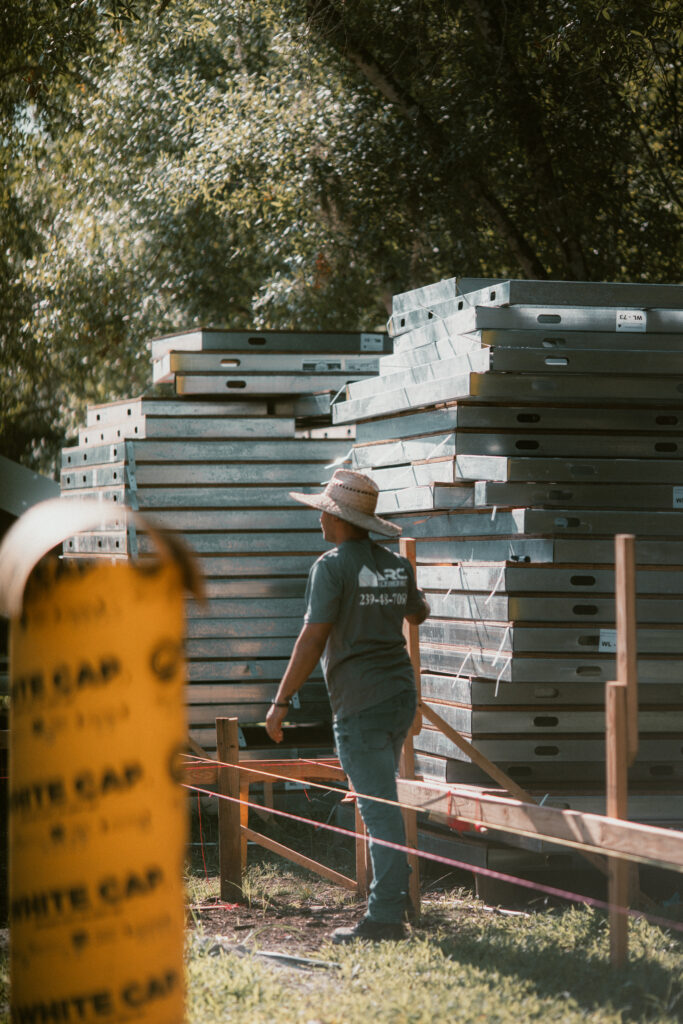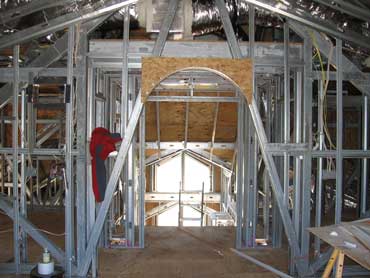
Benefits of Steel.
Strong, stable, non-combustible, impervious to termites and mold plus environmentally conscientious – Steel is the perfect choice for semi tropical climates; actually, perfect for any area where extreme weather takes its toll.
Steel buildings are mainly renowned for their power and functionality. From economic (for some, the most important single factor) to functional versatility and flexibility, environmental, safety and even health factors, steel buildings provide purchasers with a comfort level that other construction methods can not match.
Steel frame buildings are lightweight, simpler to work with and require less people to construct. It is furthermore simpler to convey round a job site, so they have less damage to put on building employees who are putting simultaneously steel buildings.

Residential Steel Structures
ENVIRONMENTAL BENEFITS
Responsible architectural design should take into consideration environmental issues as well as cost. Because steel is the most recycled waste in North America, it is considered a green building material.
Steel is cost-competitive, performance-enhancing and environmentally advantageous. According to the Steel Recycling Institute (SRI), it takes about 40 to 50 mature trees to build a 2,000 sf home from wood. It takes about six scrapped cars to build the same house out of steel. More steel is recycled
annually than paper, aluminum, glass and plastic combined.
The steel framing production process uses a minimum of 25% of recycled steel (often much more), and even all-new steel contains some recycled steel. The steel industry has made tremendous improvements to reduce pollution produced from mining, processing and steel-making waste.
Steel waste has scrap value and is readily accepted by scrap yards for recycling. Timber waste has much less recycling value than steel. The timber industry also impacts wildlife, soil, water and other resources during growing, harvesting, clear-cutting, run-off and replanting plus pest control operations.


COST STABILITY
The cost and availability of timber is unpredictable because of increased land values and sustainability issues. In contrast, the cost of steel has remained stable for years and has recently decreased in price. Meanwhile, the steel industry continues to research and find more ways to use less energy during steel production.
ABILITY TO OFFER MORE FOR LESS – A steel structure will afford the highest level of safety in extreme weather situations, will outlast any wood-frame home, and be less expensive to build. Complicated designs such as cupolas, that would cost much more when fabricated in wood, take less time and materials with steel and therefore it is less costly to incorporate interesting details.
Steel homes can be designed and constructed with modular planning. Many of the parts can be pre-fabricated and then assembled on-site. With this system, completing the job takes less time, and therefore is cost-efficient for both the builder and the buyer. Modular designs offer another big plus. Every home, although primarily constructed from similar elements, can be customized inside and out and still be cost-efficient.
ABILITY TO REMODEL
Because a structure built with steel beams is anchored with screws rather than nails, in the event of a remodel, a module (or section) can be disconnected and re-positioned without damage to the basic structure. It is possible to re-position or add an entire section; even raise a roof to add a second floor, at a much lower cost than tearing down and rebuilding a wood frame home.


ACCEPTANCE & USE
Florida, California and Hawaii are states regularly subjected to hurricanes, earthquakes, termite infestations and mold, and were among the first to acknowledge the many benefits of steel framing. It is now obvious that steel, long recognized as the standard for commercial structures, is equally beneficial as a residential material.

Follow us
Instagram is where we tell the stories of our designs. Step into our world.
Join us on Instagram for a captivating journey through the innovative world of steel frame residential architecture
Adventure is everywhere
Showcasing cutting-edge designs and timeless craftsmanship that redefine modern living.
